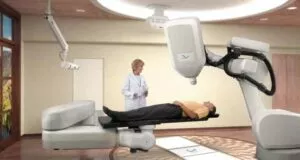GcMAF is a vitamin D-binding protein. The name GcMAF is short for Glycoprotein Macrophage Activating Factor and is what is scientifically referred to as a GC-protein.
Let’s simplify:
- A GC-protein is a kind of protein that binds itself to vitamin D (which occurs naturally in the body,) and in turn, it triggers macrophages to fight against cancer cells and other diseases threatening the body.
- Macrophages are important immune system cells that are formed in response to an infection or when damaged or dead cells accumulate in the body.
GcMAF and Cancer
When a body has cancer, cancer cells and tumors release a protein called nagalase. When nagalase is released, it prevents immune system cells from functioning properly, allowing cancer to grow without interruption.
Because of this, your natural GcMAF protein production is blocked from initiating an immune response.
When the body lacks GcMAF, it weakens and prevents the immune system from working properly. When a body has enough GcMAF, it jump-starts the entire immune response.
When a patient receives GcMAF as a treatment, the proteins trigger the body’s natural fighting cells, (the macrophages mentioned above,) and support and rebuild the immune system. This helps destroy cancerous cells or any other foreign invader in the body.
GcMAF is a type of immunotherapy, which is a method that helps boost the body’s immune system to fight diseases. A study in 2017 looked at how GcMAF could block things that weaken the immune system, like the nagalase enzyme. This treatment was found to be good at making immune cells more active in fighting tumor cells. The study showed that GcMAF works faster and better in treating certain types of tumor cells, like breast and prostate cancer cells, compared to other kinds like squamous carcinoma cells.
Learn more here:
How is it Administered?
A dose of active GcMAF is injected intramuscularly or subcutaneously once a week for a period of 10 weeks. The treatment can be done at home or in specialized alternative clinics.
The injections activate the immune system to attack cancer cells.
In certain cases, a doctor will recommend that a patient receive GcMAF either intravenously or through a nebulizer.
After 10 weeks, additional doses may be required depending on the stage and type of disease and based on disease symptoms, pathology, and progress of improvement. Treatment should be continued as long as necessary while the disease is present.
We strongly believe that having a professional integrative nurse/doctor as an online counselor can greatly benefit your healing with GcMAF.
How Effective is GcMAF in the Fight Against Cancer?
In recent decades, scientific research on GcMAF treatments has shown it to be a highly effective measure in fighting against a variety of cancers.
When patients receive GcMAF, and there is a sufficient amount of macrophages produced in the body, the immune system is able to pursue cancerous cells aggressively enough to lead to remission.
Three studies published by internationally recognized research immunologist and molecular biologist, Nobuto Yamamoto, Ph.D., have shown that incredibly small weekly doses (100 billionths of a gram – an amount invisible to the naked eye) of GcMAF cured early metastatic breast, prostate, and colon cancers in 100% of (nonanemic) patients. In a fourth study, he used the same treatment to cure 100% of nonanemic HIV-infected patients.
Side effects of GcMAF therapy
A 2002 article about GcMAF published by the Journal of the National Cancer InstituteTr states that mice and humans who were given purified GcMAF had no side effects.
What Diseases Is It Used For?
In addition to cancer, it is used to treat diseases such as Hepatitis B and C, Herpes, Endometriosis, Autism Spectrum Disorders, Lyme disease, Chronic Fatigue Syndrome, Fibromyalgia, Endometriosis, Psoriasis, Malaria, Lupus, Osteoporosis, Type 1 Diabetes COVID 19.










